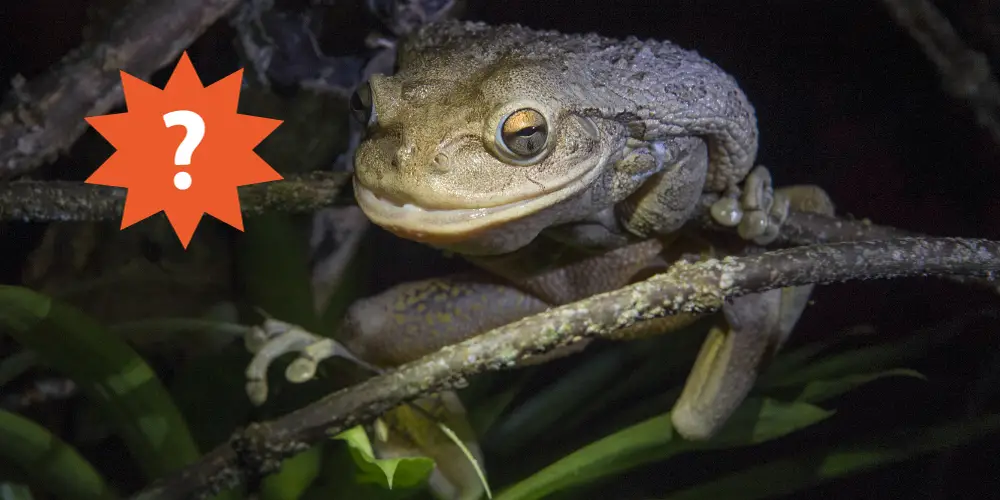Ever wondered about the secretive lives of frogs when the sun sets? ‘Are frogs nocturnal?’ is a question that reveals the fascinating world of these diverse amphibians.
Many frog species are nocturnal, active at night, exploiting benefits like abundant prey and reduced predation risk. However, some species are diurnal, active during the day, adapting to different environmental conditions and food availability. Each species has unique adaptations and behaviors based on its lifestyle.
Join us to explore these amphibians’ intriguing adaptations and lifestyles and learn why the moon is a special friend to many frogs!
Key Takeaways
- Many frogs are nocturnal, exhibiting adaptations and behaviors to thrive at night.
- Nocturnal frogs benefit from reduced predation risk and abundant prey availability at night.
- Some frog species are diurnal, active during the day, adapting to different environmental conditions and food availability.
- Frogs have developed physiological features like large eyes and sensitive eardrums to navigate and hunt effectively in the dark.
- The nocturnal environment is crucial for frog reproduction, with mating calls and egg-laying predominantly occurring at night.
- Artificial light pollution can disrupt the nocturnal world of frogs, altering their behaviors and impacting their ecosystems.
- Conservation of nocturnal frogs is paramount, requiring habitat protection and public awareness to preserve these unique species.
- Frogs play a vital ecological role, controlling insect populations and contributing to biodiversity in their habitats.
- Studying nocturnal frogs in their natural habitats is essential for understanding their behaviors, interactions, and adaptations.
- Human activities, including habitat destruction and pollution, significantly impact frog populations, necessitating responsible interactions and conservation efforts.
Defining Nocturnal Creatures

Nocturnal beings like our leaping friends have distinctive characteristics to thrive in the darkness.
They boast remarkable adaptations like enhanced auditory and visual senses, enabling them to navigate and forage efficiently under the moonlight.
Characteristics of Nocturnal Creatures
- Enhanced sensory organs
- Specialized limbs for traversing in the dark
- Adapted to cooler and quieter environments
Diversity in Frog Species
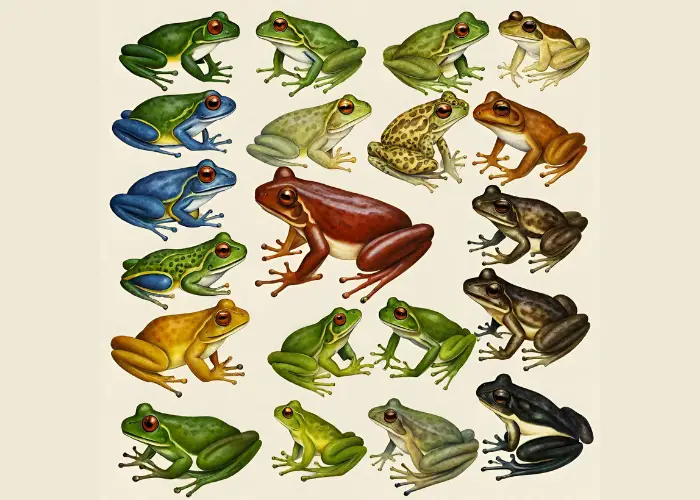
The frog kingdom is rich with various species, each exhibiting its unique set of behaviors and adaptations.
Some are masters of the night, while others prefer the daylight, showcasing the diverse lifestyles within the amphibian world.
Examples of Diverse Frog Species
- Tree Frogs: Often nocturnal, they utilize their specialized limbs to traverse tree canopies.
- Poison Dart Frogs: Mostly diurnal, they exhibit vibrant colors to warn predators of their toxicity.
Biological and Environmental Influences
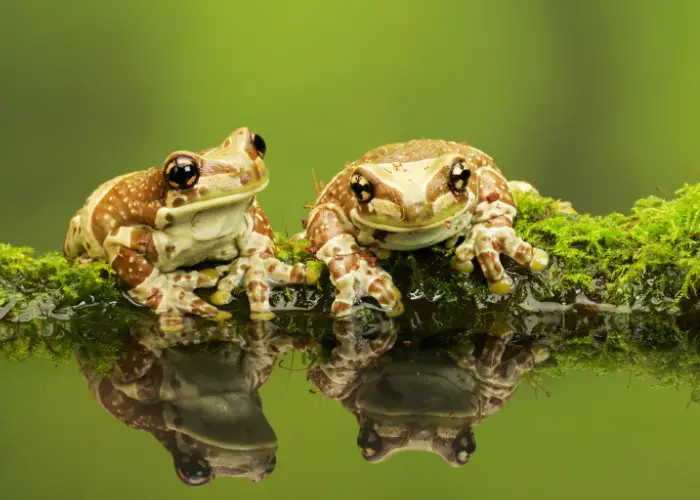
The nocturnal behavior of frogs is intricately linked to their biology and the environment they inhabit.
The cool and damp conditions of the night are essential for maintaining their skin moisture, which is crucial for their survival.
Why Do Frogs Prefer the Night?
- Lower risk of desiccation
- Reduced visibility to predators
- Abundance of nocturnal prey
Physiological and Behavioral Adaptations

To conquer the night, frogs have developed astonishing physiological features and behaviors.
Their enhanced sensory organs and specialized limbs are their allies in traversing the nocturnal landscape and capturing prey, such as unsuspecting bees.
Adaptations for Night Activity
- Large Eyes: Frogs have large, bulging eyes that absorb more light, aiding in better vision at night.
- Sensitive Eardrums: Their eardrums can detect the faintest of sounds, enabling them to hear predators and prey in the dark.
Benefits of Nocturnal Lifestyle
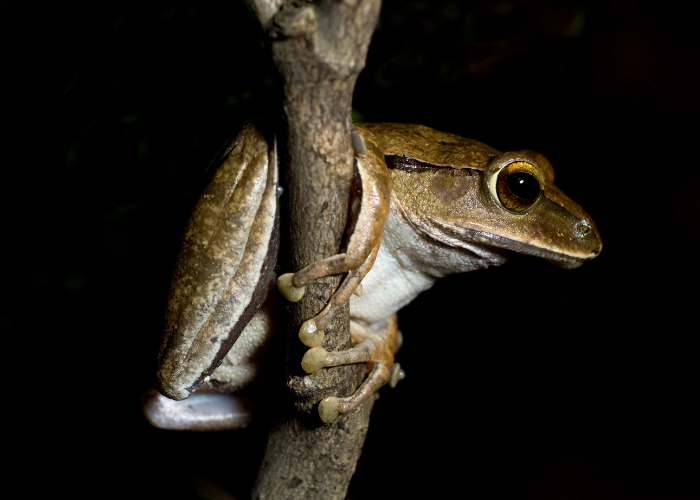
Embracing the night offers frogs numerous advantages, from eluding predators to conserving energy.
It allows them to exploit the nocturnal buffet, optimizing their chances of survival and reproduction.
Advantages of Being Nocturnal
- Predator Avoidance: Many predators are diurnal, so being active at night reduces predation risk.
- Energy Conservation: Cooler temperatures reduce the need for water and energy, allowing frogs to conserve resources.
Instances of Diurnal Behavior
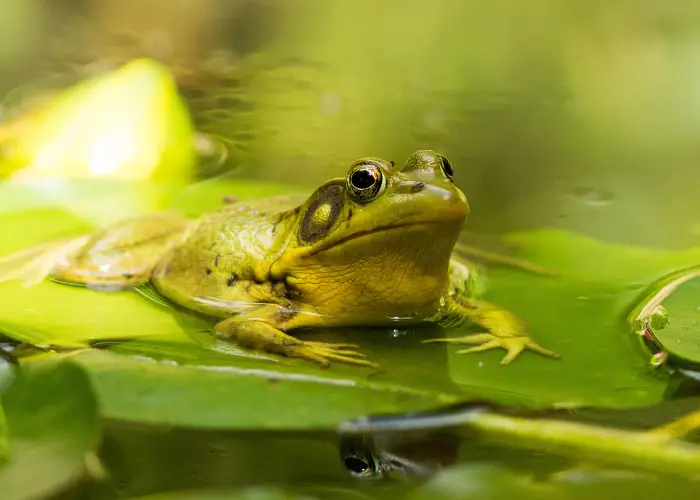
Some frog species are active during the day, adapting to varied environmental conditions and food availability.
Understanding these instances sheds light on the adaptability and flexibility of frogs in diverse ecosystems.
Diurnal Frog Species
- Mantella Frogs: Active during the day, they search for food while the temperatures are warm.
- Strawberry Poison-Dart Frog: This colorful species is diurnal, utilizing the daylight to forage and communicate.
Hunting Strategies and Diet
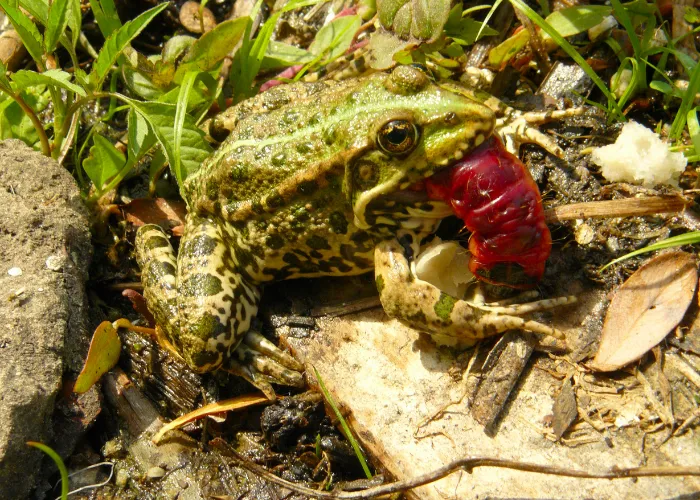
Frogs employ a range of hunting strategies to secure a diverse diet. Their nocturnal nature allows them to exploit the abundance of nocturnal insects efficiently, ensuring a steady food supply.
Frog’s Diet and Hunting Techniques
- Sit-and-Wait Predators: Many frogs are ambush predators, waiting patiently for prey to come within striking distance.
- Active Foragers: Some species actively pursue their prey, utilizing their powerful legs to leap and capture them.
Importance of Moisture
Moisture is paramount for frogs. It aids in maintaining their skin’s permeability, allowing them to breathe and regulate their body temperature effectively.
How Do Frogs Maintain Moisture?
- Nocturnal Activity: The cooler and more humid conditions at night help reduce water loss through their skin.
- Hiding During the Day: Frogs seek refuge in damp and shaded areas during the day to avoid dehydration.
Visual Adaptations for Night Activity
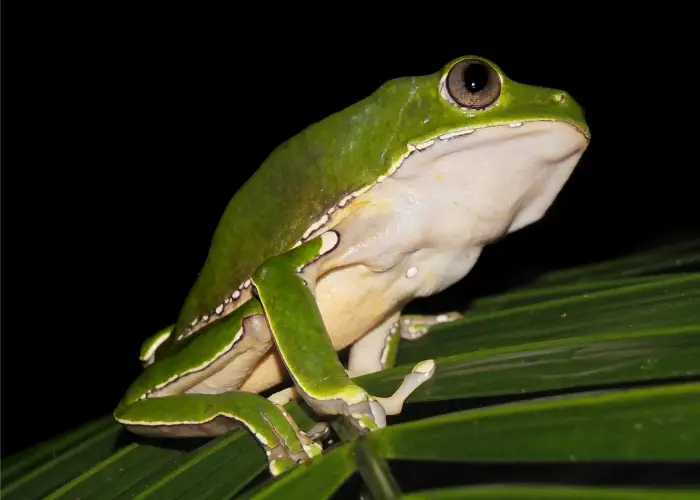
To navigate the night, frogs have specialized visual adaptations. These adaptations are crucial for their nocturnal escapades, enabling them to hunt and move effectively in the dark.
Adaptations for Night Vision
- Rod Cells: Frogs have many rod cells in their retinas, allowing them to detect light and movement in low-light conditions.
- Tapetum Lucidum: Some species possess this reflective layer behind the retina, enhancing their night vision by reflecting light that passes through the retina back through it.
Ecological Context and Predators of Nocturnal Frogs
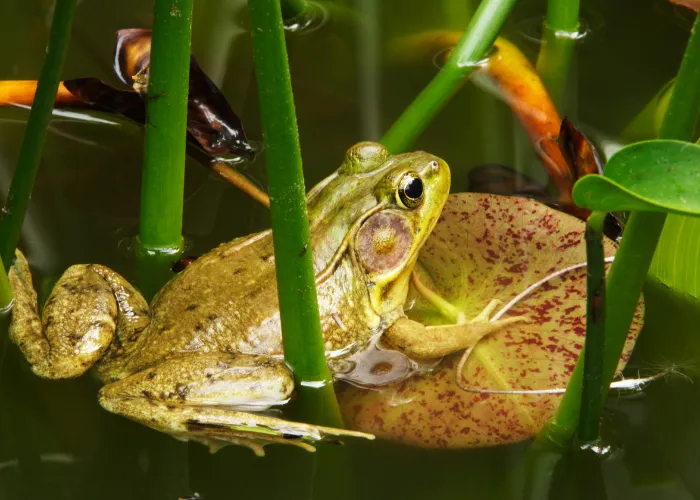
Exploring the ecological role and the predators of nocturnal frogs provides insights into their survival strategies and defensive mechanisms.
It underscores their importance in maintaining ecological balance and biodiversity.
Ecological Role of Frogs
- Insect Control: Frogs help control their populations by preying on insects, benefiting ecosystems and humans.
- Prey for Other Species: Frogs are a crucial food source for various animals, including birds, mammals, and reptiles.
Nocturnal Communication in Frogs
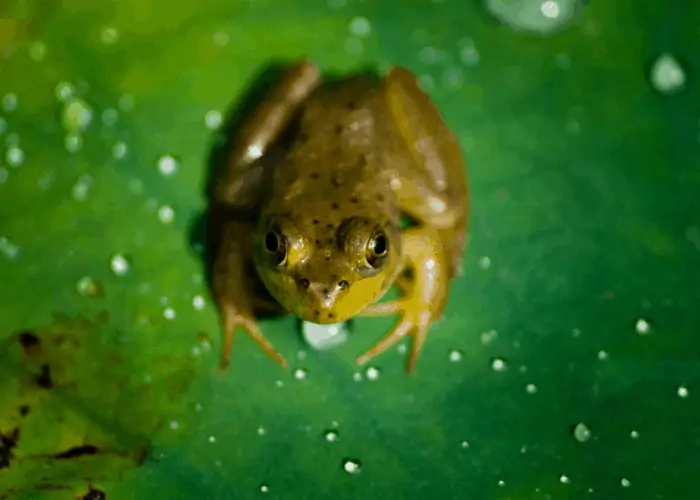
Frogs communicate using a symphony of sounds and signals during the night.
These nocturnal conversations are vital for attracting mates and establishing territories, adding another layer to their intricate nocturnal behavior.
How Do Frogs Communicate at Night?
- Vocalizations: Male frogs produce a variety of calls to attract females and ward off rival males.
- Visual Signals: Some species use body coloration and movements as forms of communication, especially in environments with high background noise.
Impact of Environmental Conditions

Environmental conditions such as temperature and seasons play a pivotal role in shaping the nocturnal activities of frogs.
These conditions influence their behavior, feeding, and reproductive patterns, sculpting their nocturnal existence.
Environmental Influences on Frog Behavior
- Temperature: Frogs are ectothermic, meaning their body temperature is regulated by the environment, impacting their activity levels.
- Seasons: The availability of food and suitable conditions for breeding are often seasonal, influencing the times when frogs are most active.
Reproductive Behavior and Egg Laying
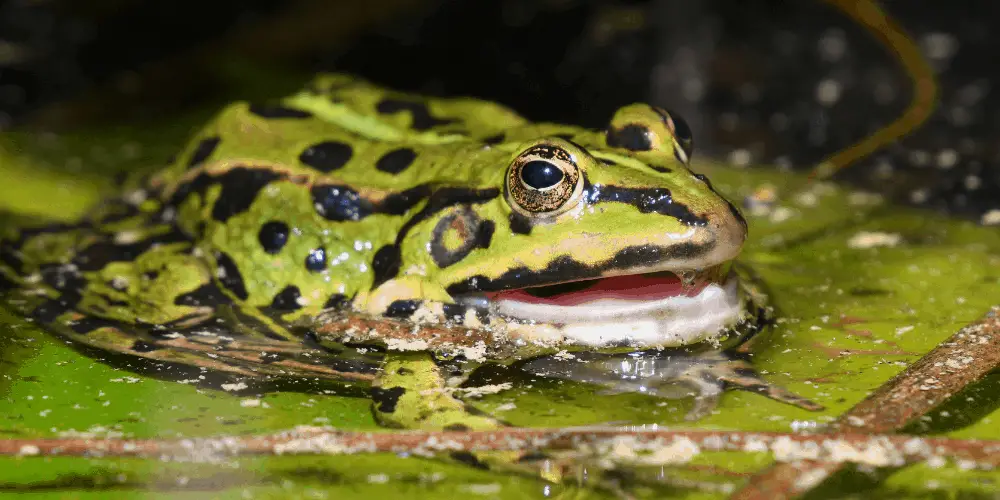
The nocturnal environment is a haven for frog reproduction. Mating calls and selecting egg-laying sites are integral aspects of their reproductive behavior, ensuring the continuation of their lineage.
Frog Reproductive Strategies
- Vocalizations for Mating: Male frogs use distinct calls to attract females for mating.
- Egg Placement: Depending on the species, frogs lay their eggs in various locations, such as water, leaves, or underground, to protect them from predators and environmental conditions.
Impact of Light Pollution
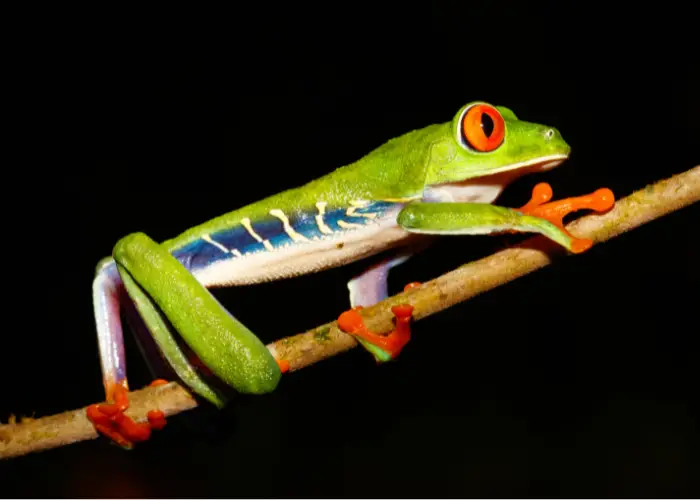
The encroachment of artificial light disrupts the nocturnal world of frogs, altering their behaviors and impacting their ecosystems.
Addressing light pollution is imperative for the conservation of nocturnal frogs.
Effects of Light Pollution on Frogs
- Behavioral Changes: Exposure to artificial light can alter frogs’ normal behaviors, such as feeding and mating.
- Disruption of Biological Rhythms: The interference of light with the natural dark-light cycle can disturb the circadian rhythms of frogs, affecting their physiological processes.
Studying Nocturnal Frogs in the Wild

Researching nocturnal frogs in their natural habitats unveils the secrets of these elusive creatures.
Advances in technology and research methodologies are paving the way for discoveries in the nocturnal world of frogs.
Methods of Studying Nocturnal Frogs
- Field Observations: Scientists observe frogs in their natural habitats to study their behaviors, interactions, and adaptations.
- Technological Tools: Modern tools like bioacoustics and camera traps aid researchers in monitoring and analyzing the activities of nocturnal frogs.
Conservation Awareness and Strategies
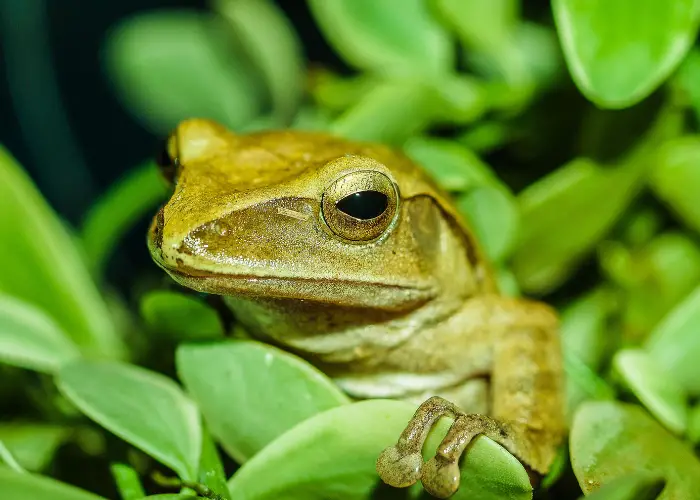
Conservation of nocturnal frogs is paramount. Raising awareness and implementing effective conservation strategies are vital for preserving these unique species and their nocturnal habitats.
Conservation Strategies for Nocturnal Frogs
- Habitat Protection: Preserving and restoring natural habitats are crucial for the survival of frog species.
- Public Awareness: Educating the public about the importance of frogs and the threats they face can foster support for conservation efforts.
Comparative Analysis with Other Amphibians

Comparing the nocturnal behaviors of frogs with those of other amphibians unveils intriguing parallels and distinctions.
It enriches our understanding of the adaptations and lifestyles of nocturnal amphibians.
Comparison with Salamanders
| Feature | Frogs | Salamanders |
|---|---|---|
| Activity Patterns | Many are nocturnal | Range: nocturnal, diurnal, crepuscular |
| Habitats | Versatile in choices | Specific requirements |
Examples of Behavioral Flexibility
- Changing Diets: Frogs can alter their diets based on the availability of food resources.
- Adjusting Activity Patterns: Some frogs can modify their activity times in response to environmental changes, such as temperature fluctuations.
Ecological Importance of Nocturnal Frogs
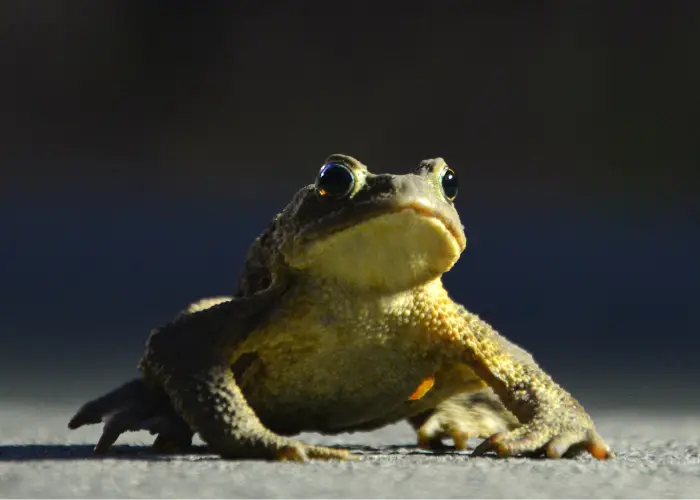
Nocturnal frogs are ecological keystones, maintaining balance and biodiversity in their habitats.
Their contributions are invaluable, emphasizing the urgency of their conservation.
Ecological Contributions of Frogs
- Biodiversity: Frogs contribute to species richness in ecosystems, playing unique roles in their habitats.
- Nutrient Cycling: Frogs are integral to the flow of energy and nutrients in ecosystems by feeding on insects and being preyed upon by other animals.
Human Interaction, Impact, and Conservation Efforts
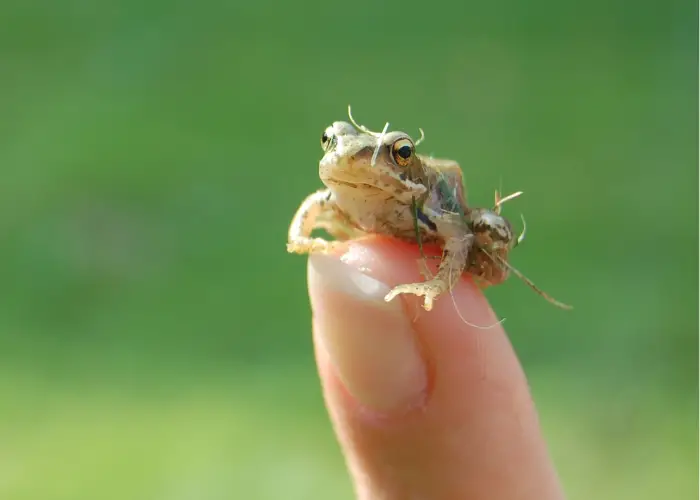
Human activities cast a long shadow on nocturnal frogs. Responsible interactions and conservation efforts are crucial for mitigating negative impacts and fostering harmonious coexistence with these amphibians.
Human Impact on Frogs
- Habitat Destruction: Human activities like deforestation and urbanization lead to the loss of frog habitats.
- Pollution: Chemical pollutants from agricultural and industrial activities can contaminate water bodies, affecting frog populations.
Conclusion
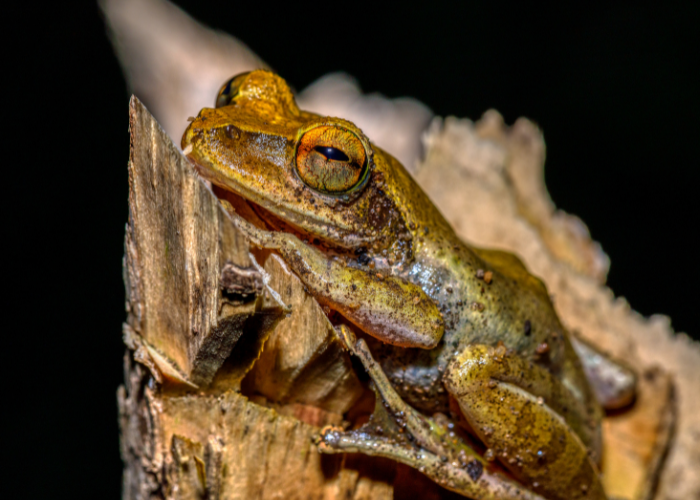
Whether frogs are nocturnal unveils a world rich with adaptations, behaviors, and ecological roles.
Understanding these aspects is crucial for appreciating their significance and advocating for their conservation.
Final Thoughts
Frogs are fascinating creatures with diverse lifestyles and adaptations. Whether they are leaping through the trees at night or basking in the daylight, their behaviors and ecological roles are crucial to the balance of nature.
By protecting these remarkable amphibians, we are preserving the richness and health of our planet.
Frequently Asked Questions
Additional Resources
For those intrigued by the nocturnal lives of frogs and wishing to delve deeper, here are some additional resources and readings.
- Wild About Illinois Frogs and Toads! (2023, September 28). Illinois Department of Natural Resources. https://dnr.illinois.gov/education/wildaboutpages/wildaboutfrogs.html
- Amphibians – White Sands National Park (U.S. National Park Service). (2020, August 21). National Park Service. https://www.nps.gov/whsa/learn/nature/amphibians.htm
- Southern Leopard Frog (Rana sphenocephala) – Texas Parks and Wildlife. Texas Parks and Wildlife Department. https://tpwd.texas.gov/huntwild/wild/species/southernleopardfrog/
Glossary
- Amphibians: Creatures that can live both in water and on land. Frogs belong to this group of animals.
- Nocturnal: Refers to animals primarily active at night and resting during the day.
- Diurnal: Refers to animals that are primarily active during the day and rest at night.
- Ectothermic: Animals that depend on external sources of temperature to regulate their body temperature, also known as cold-blooded animals. Frogs are ectothermic.
- Habitat: The natural environment in which an animal or plant usually lives provides the necessary conditions for growth and reproduction.
- Predator: An animal that hunts, kills, and eats other animals for food.
- Prey: An animal hunted, killed, and eaten by another animal.
- Biodiversity: The variety of plant and animal life in a particular habitat, ecosystem, or the world.
- Ecological Balance: The state of equilibrium between living organisms and their environment, where each species coexists harmoniously without disrupting the survival of the other.
- Desiccation: The process of extreme drying. Frogs avoid desiccation by being active during cooler, more humid times, like the night.
- Tapetum Lucidum: A layer of tissue in the eye, present in some animals, that reflects visible light through the retina, improving vision in low-light conditions.
- Bioacoustics: A scientific study that combines biology and acoustics, usually used to study sound production and hearing in animals, including frog vocalizations.
- Circadian Rhythms: Physical, mental, and behavioral changes in living beings that follow a roughly 24-hour cycle, responding primarily to light and darkness in an organism’s environment.
- Conservation: The planned management of a natural resource to prevent exploitation, destruction, or neglect.
- Light Pollution: The brightening of the night sky is caused by street lights and other man-made sources, which disrupts natural ecosystems and human health.
- Permeability: The quality of a material or membrane that causes it to allow liquids or gases to pass through it. In the context of frogs, it refers to their skin allowing the passage of water and gases.
- Vocalizations: The creation of sounds by animals, such as the calls made by male frogs to attract females.
- Rod Cells: Photoreceptor cells in the eye’s retina that can function in less intense light than the other type of visual photoreceptor, cone cells.
- Crepuscular: Refers to animals primarily active during the twilight hours at dawn and dusk.

